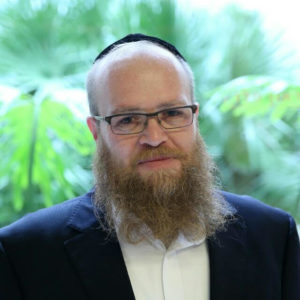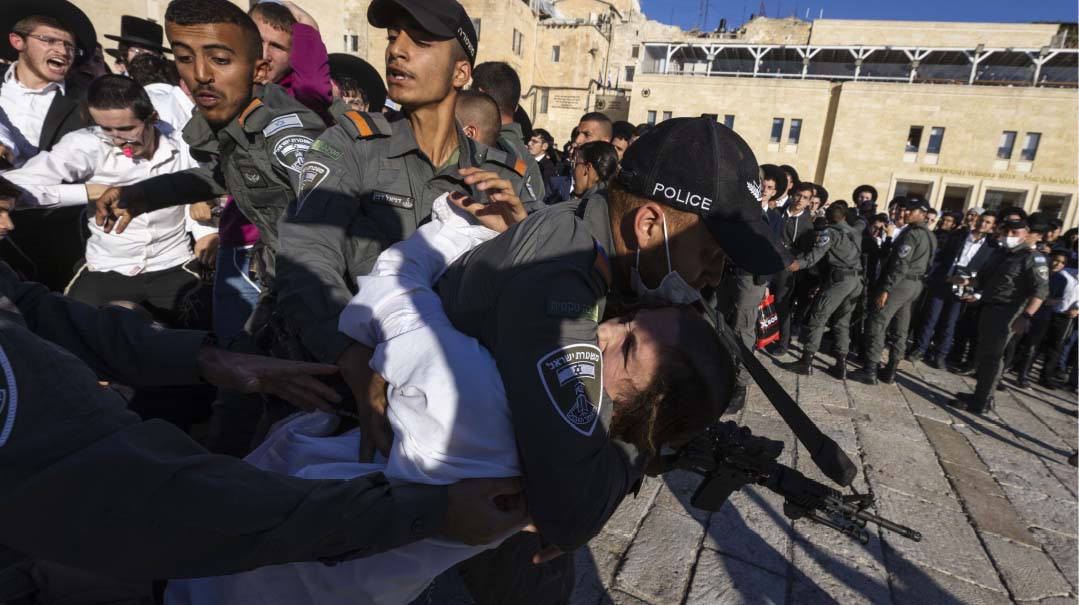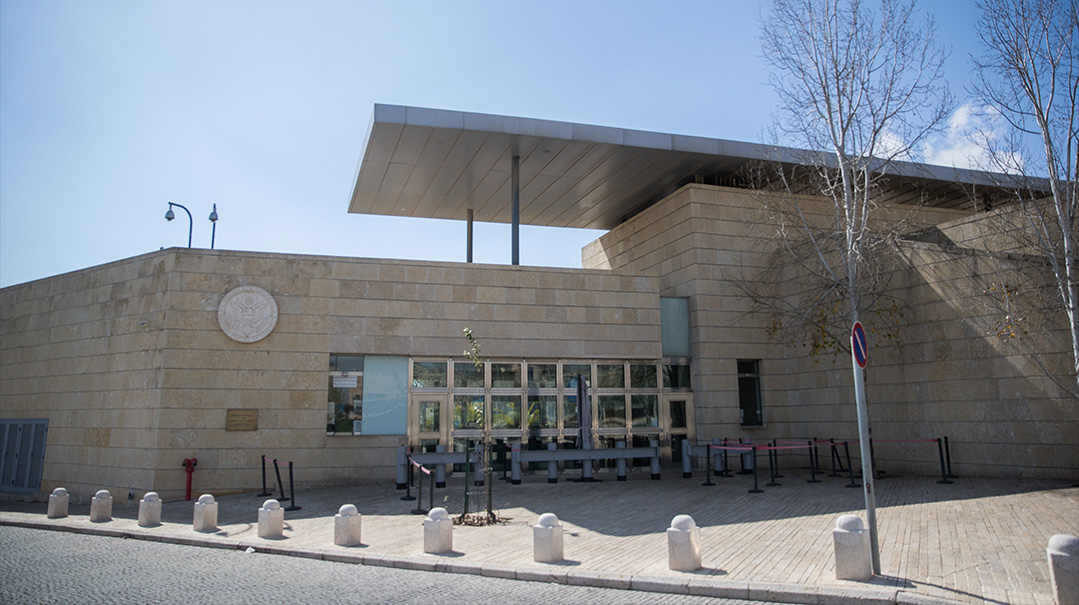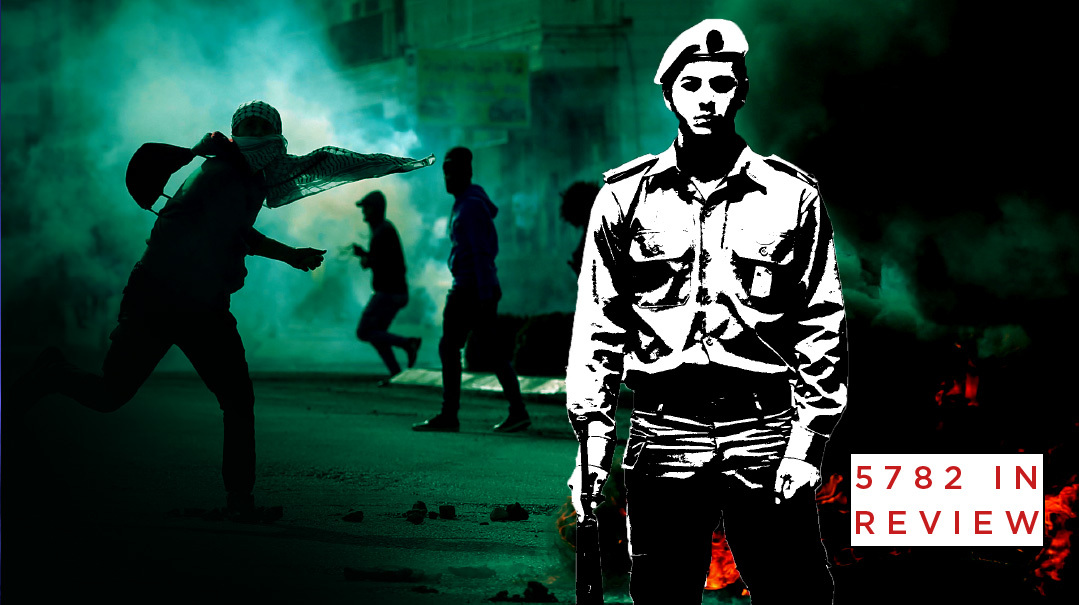Drama at the Plaza

Will planning laws foil the push to reform the Kosel?

The battle over mixed prayer at the Kosel is heating up — much to the pleasure of left-wing egalitarian elements — but significant legal difficulties lie ahead for the Bennett-Lapid government. And the coalition will likely be put to another test, as the disparate anti-Netanyahu factions try to cobble together an acceptable solution.
Over five years after the “Kosel Compromise Plan” was approved by the Netanyahu government (only to later be frozen), the High Court is expected to instruct Prime Minister Naftali Bennett’s government to go ahead with the plan, which would allow mixed prayer at the Kosel. The Bennett-Lapid-Lieberman government is expected to attempt to implement this in practice.
The struggle now begins in earnest between those preserving the sanctity of the holiest place in the world and representatives of heterodox streams of Judaism and their political patrons, who will do anything to violate it. Housing Minister Ze’ev Elkin and Religious Services Minister Matan Kahana, two of the leading Orthodox voices in the coalition, have said they won’t let the plan go ahead. But while they conceivably believe this plan is a step too far, the right-wing elements in the coalition have a track-record of protesting pro forma, but folding in the end anyway.
Chareidi and national religious opposition MKs met with coalition members numerous times over the past few weeks in a last-ditch effort to stop the reforms. At the same time, they’re making preparations for a huge prayer rally of hundreds of thousands of participants. Meanwhile, a social media campaign charged that “Bennett is dividing the Kosel.” The plan is to arrange huge rallies and public prayers events should the government approve the deal.
In 2016, in the wake of repeated appeals to the High Court, the Netanyahu government drew up the Kosel Compromise Plan to enable pluralistic prayer at the southern Kosel plaza, with no separation between men and women. The significantly expanded prayer section was to be accessed from the main plaza, with a sign reading “Ezrat Yisrael” proudly marking the place where men and women could pray without partition at the holiest site in the world.
The plaza was to be administered by a public council appointed by the prime minister. This council was to include six representatives of the Conservative, Reform, and Women of the Wall movements, as well as six civil servants representing the prime minister’s office, the diaspora ministry, and the Israeli Antiquities Authority. Per the compromise, the Regulations for the Protection of the Holy Places would be amended and the local customs in the southern plaza would be based on the principles of “religious pluralism and gender equality.” While hitherto the only authority for the conduct of prayers at the site was that of the rav of the Kosel, Rav Shmuel Rabinowitz, and the chief rabbinate, the compromise would nullify his authority over the southern plaza, giving it to the Reform instead.
It’s important to note that the prayer area was to be significantly expanded, with multiple levels, and would include a raised prayer plaza with a large expanse surrounding it. At the end of the day, the area the government set aside for the Reform would be 130 percent of the size of the current women’s section, or 70 percent of the size of the current men’s section.
The funds designated for the project were immense: NIS 35 million for the construction, plus NIS 5 million a year for its upkeep. By comparison, the budget for the entire Kosel Plaza currently stands at just NIS 2 million a year.
Furthermore, the compromise called for the entrance to the mixed section to run through the main plaza. After passing through security, everyone would be able to choose which Kosel they want to visit — the Orthodox one, or the Reform one.
The chareidi parties, who tepidly backed the deal initially, soon caught on to the dangers posed by the compromise, and in 2017 the Netanyahu government decided to put the plans on hold. For all that, Netanyahu didn’t wish to risk an open rift with the Reform movement, and ordered construction preparing the southern plaza for prayer to proceed. Only after protests to the Jerusalem municipality by a variety of Orthodox and chareidi groups did the construction cease. The city engineer issued a stop-work order on grounds of the archaeological status of the site. Today, mixed prayer takes place at the place in small groups, mostly on Mondays and Thursdays, or during “bar mitzvah” celebrations at the Kosel.
No Easy Path
Although the Lapid-Bennett coalition had made enabling pluralistic prayer at the Kosel a plank in the government’s platform, it’s becoming clear that pulling this off won’t be easy at all, either practically or judicially.
The judicial difficulty stems from a Mandate-era law stipulating that any change in the Kosel’s status requires the minister of religious affairs (currently Matan Kahana) to consult with and secure the approval of the chief rabbis of Israel and the Kosel Rav. This is not a mere formality — the minister is expected to solicit the rabbis’ opinion and abide by it. The law specifically precludes him from showing up with his own opinion and seeking a rubber stamp from the rabbanim. With the rabbanim’s refusal a foregone conclusion, the government could in theory form an administrative council for the south of the Kosel, but it will lack authority to alter the current state of affairs.
The political hurdle facing the government is lack of unanimity within its own ranks. Housing minister Ze’ev Elkin said last week that he opposes the compromise because it will place part of the Kosel under the control of the Reform movement, which could lead to demands for the main plaza to be split up by denomination as well. However, he made it clear that he doesn’t oppose the compromise itself; he just wants the administration of the site to be handled by the state or the Jewish Agency rather than a particular religious denomination. Still, Elkin believes the Reform should be able to choose their representative on behalf of the agency. Interior minister Shaked has also expressed opposition to sweeping changes at the site in the past.
Legal Blockage
So does any hope remain of foiling the government’s intention to transfer the lion’s share of the Kosel Plaza to a handful of the Reform?
Attorney Eldad Rabinowitz, who represents a variety of right-wing NGOs, believes that any renovation or construction at the Kosel Plaza is illegal, because municipal zoning designates the area as an archaeological site in which construction is prohibited.
“Changing the urban planning scheme is a procedure that takes time, and will allow us to file protests,” he explains. “That’s why when we filed a request with the Jerusalem municipality to stop the construction that started here during the Netanyahu government, they backed off immediately. The state can’t force the municipality to agree to illegal construction. This will make it possible to fend off the beginning of construction for several years, depending on how alert the public is and how many protests are filed.”
And Rabinowitz believes the legal case against making the upper plaza or the south of the Kosel into a mixed section is rock-solid.
“According to the Mandate-era King’s Order in Council, which hasn’t been replaced, the court has no jurisdiction over religious ritual — it’s none-justiciable,” he says. “Today, everything at the site is under the purview of the Kosel Rav, representing the chief rabbinate. This is why the High Court has been reluctant to press ahead with this, despite the amount of time it has taken.
“Of course the government can always amend the law, but this will have consequences elsewhere, as well. For example, it will affect the status of the Temple Mount or, l’havdil, the Church of the Holy Sepulcher. When the government has involved itself in religious disputes in the past, this enabled the court to comment on the subject, and that’s why the court is so eager for the government to get involved now. This is a highly controversial question.”
In Rabinowitz’s view, the fact that it’s so problematic means public opposition to the Kosel compromise could actually have a real impact.
“One way of putting this is that it’s an expropriation of part of the Kosel, a large and important part of the Kosel, to a group that is a tiny minority in the State of Israel and represents practically no one. We’ve managed to block the building at the site in the Planning and Construction Committee, but the public has an important role to play in this struggle.
“For example, the Libah Yehudit organization has fought every time to erect a mechitzah, despite the state’s opposition.”
And the state’s lack of legal authority to dispense with even a mechitzah, Rabinowitz says, makes its case for Reform prayer services that much more tenuous.
“In reality, no one has the authority to allow the Reform to hold services at the southern Kosel without a mechitzah, unless the rav of the Kosel approves it,” he points out. “As long as he has yet to approve it, minhag hamakom [local custom] remains as it was. Again, the more prominent the chareidi-Orthodox presence at the site, the less easy will the government and the High Court find it to carry out the changes they want.”
Not the First Time
Attempts to enable mixed davening at the Kosel through compromise are nothing new. Rare documents obtained by Mishpacha and first unveiled here reveal that the state first tried to make changes at the Kosel in 1976, through a special architectural plan drafted by the famed architect Moshe Safdie, which would have constructed a series of terraced plazas leading from the Jewish Quarter to the Herodian Street, and overlooking the Kosel.
The architect David Cassuto, an advisor to then religious affairs minister Yitzchak Refael, was opposed to this plan. He organized a conference of architects to make his concerns known, and also turned to the Rishon L’Tzion, Rav Ovadiah Yosef, then the chief rabbi of Israel, to alert him to the proposal. Rav Yosef issued an opinion that ultimately prevented its implementation.
The Rishon L’Tzion’s opposition was backed by four other gedolim: Rav Shlomo Zalman Auerbach, Rav Yechezkel Abramsky, Rav Yosef Shalom Elyashiv, and Rav Shach. In a letter addressed to the committee of ministers for Kosel affairs, they wrote: “We oppose the plan, because it will transform the Kosel from a place of kedushah into a historical [i.e., tourist] site by the obtrusion of unnecessary elements that would negate the site’s kedushah as well as violate good taste.
“Furthermore, it makes no allowance for separation between men and women. The plan calls for archaeological diggings, while the conduct of architects and their assistants at the southern Kosel doesn’t add honor to the Jewish People. Even should their conduct change, organized davening at the place is unimaginable under this plan, especially on Shabbos and Moadim. Anyone who has seen the huge ma’amad of Klal Yisrael, especially Shavuos and Bircas Kohanim, will tremble at the thought of putting this on hold.
“The idea of building a platform over the diggings is also an illusion. And so anyone who doesn’t want to make a mockery of his tefillos will oppose the plan with might and main.
“In conclusion, we reject the Safdie plan. Furthermore, our generation does not have authority to determine the shape of the Kosel Plaza for future generations, and for this reason we demand that any plans for the overhaul of the plaza be put on hold, and let the future decide.”
The protest worked. The Safdie plan was scrapped, and as the architect Cassuto put it: “Rav Ovadiah saved the Kosel from Teddy Kollek.”
(Originally featured in Mishpacha, Issue 887)
Oops! We could not locate your form.






